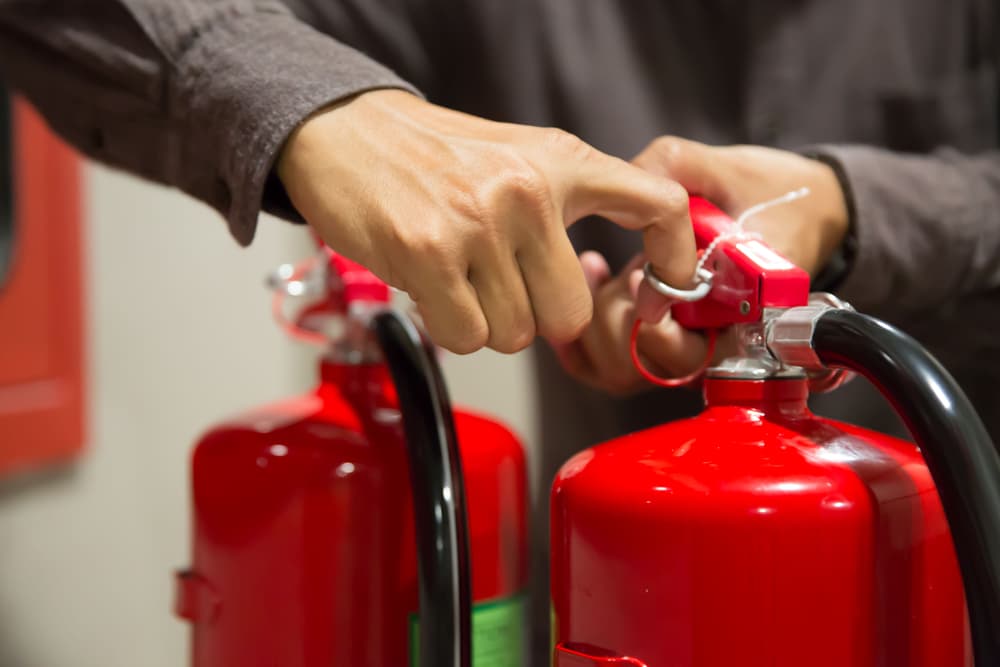4 Areas of Fire Prevention
Fire prevention is crucial in ensuring the safety of individuals and protecting property. By implementing effective fire prevention measures, potential risks can be minimized, and the occurrence of devastating fires can be significantly reduced. In this blog, we will explore four key areas of fire prevention: equipment, engineering, education, and evaluation.
Equipment
One essential aspect of fire prevention is the use of appropriate equipment. From fire extinguishers to smoke detectors, having the right tools in place can make a significant difference in the event of a fire. Additionally, fire-resistant paints are vital in minimizing the spread of flames.
These paints are designed to resist ignition and reduce the intensity of fire. Using fire-resistant paints on walls, ceilings, and other surfaces can effectively mitigate the risk of fire propagation.
Fire-resistant paints not only buy valuable time for evacuation but also limit the extent of fire damage, making them an essential asset in the fight against fires. Applied like traditional paints, they find utility in residential and commercial settings.
Engineering
Another crucial area of fire prevention is engineering. This involves implementing structural measures to minimize fire hazards and improve the overall safety of a building. For instance, installing fire doors, fire-resistant windows, and fireproof insulation can help contain and limit the spread of fire. Proper ventilation systems and electrical wiring also significantly prevent fires caused by overheating or electrical faults.
Engineers work to ensure that structures are built to withstand fires and provide safe evacuation pathways. By integrating fire safety into the blueprint of buildings, engineering becomes a cornerstone in the battle against fires.
Education

Fire prevention education is essential for creating awareness and promoting responsible behavior. Educating individuals about fire safety measures, such as properly storing and handling flammable materials, can reduce the likelihood of fire incidents. Training employees on evacuation procedures and providing fire safety drills can also enhance preparedness and response in case of emergencies.
Schools, workplaces, and communities must conduct fire safety drills regularly. Furthermore, educating individuals about using fire extinguishers and evacuation procedures ensures they are well-prepared to handle fire emergencies.
Evaluation
Regularly evaluating and assessing fire prevention measures are crucial to identify potential risks and make necessary improvements. Conducting fire risk assessments, inspecting fire safety equipment, and ensuring compliance with relevant regulations are vital for maintaining a safe environment. Organizations can address shortcomings and implement effective measures to prevent fire hazards by continuously evaluating fire prevention strategies.
Protect Yourself with RDR Technologies
Fire prevention requires a comprehensive approach covering equipment, engineering, education, and evaluation. By synergizing these four areas, individuals, communities, and organizations can create an environment that minimizes the risk of fires.
RDR Technologies specializes in fire retardants, fire suppressants, and other fire-resistant materials. We are committed to providing you with ideal solutions for your fire safety. Contact us today and learn more about how we can help you.
Recent Posts
-
How to Stop Wildfires
Wildfires pose a significant threat to both human life and the environment, causing extensive damage …Jul 10th 2024 -
How Often Do Wildfires Occur
Wildfires are a natural phenomenon that have shaped landscapes for millions of years. However, in re …Jul 10th 2024 -
Where Do Wildfires Occur?
Wildfires, powerful and often destructive natural events, occur worldwide, fueled by various factors …Jul 10th 2024




